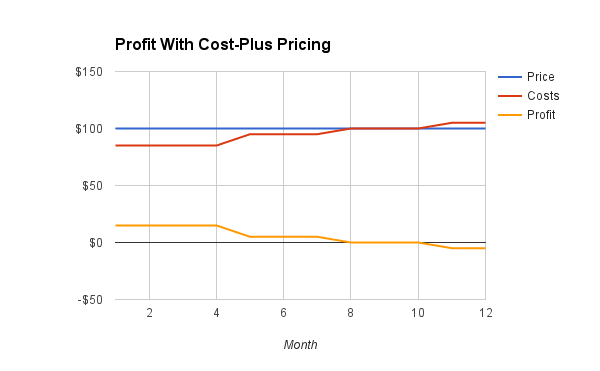
Dropshipping’s rise as a money-making model is evident from the fact that more than $85 billion in sales come from dropshipping each year. Just to put that into perspective, Intel earned $79 billion in revenue in 2018.
The dropshipping model itself is very simple. You market your products online (while holding no inventory), and when a customer pays for one of your products, your supplier fulfills the order, taking care of packaging and shipping. And, therein lies the appeal of dropshipping: you don’t manage inventory, you don’t tackle shipping; all you have to do is market products and make money off of them.
Even then, the margins earned through dropshipping are usually lower than conventional selling, owed mostly to higher costs charged by suppliers to handle fulfillment and shipping.
Therefore, it can get frustrating for dropshippers when they put in the work to sell but still attract low revenues.
But, worry not; in this blog post, we’re going to show you 4 things that you can do (while sitting at the comfort of your desk) to increase your dropshipping revenue.
#1 Do Your Product Research to Find Highly Profitable Items
The first thing you have to do is draw inspiration from your personal experience. It’s easier to vet and sell products that you’ve had personal experiences with. This way, you can analyze them for quality and pick the right products to sell. You also draw a competitive advantage, as you can explain the products technically due to your experience with their benefits first hand.
Secondly, when you’ve locked down on a product category that you’re familiar with, it’s time to figure out trending products. You can do that by browsing through resources like:
- Kickstarter.com
- Wishlist.com
- Google Trends
- Etsy.com
- Amazon Best Sellers
- AliExpress Best Sellers
When you’ve found a product that is of interest to you with sizable demand, it’s time to do a basic competitor analysis.
First, you’re going to look at the price range for which your selected product is being sold. Then, you’re going to look at how much suppliers are charging for the product.
Try to find products that give you a healthy margin on each sale. For example, if a trendy wallet is selling for $20 and you can find it on AliExpress for $5 dollars, you’re going to make $15 on each sale (minus cost of advertising). Such products will help you create high margins and greater revenue.
#2 Set The Right Prices
While it's a good practice to do a competitor benchmark analysis to see market prices for a product, chances are that you still may be missing out on some potential profits.
First, let's look at the 3 most common product pricing methods:
- Cost-based pricing
- Competition-based pricing
- Value-based pricing
Cost-based pricing is when you calculate the cost of selling your product (supplier price + marketing costs) and add a markup to it. For example, if it costs you $6 to sell a hat, you can choose to add a markup of 50% and sell it for $9.50.

With cost-based pricing, you can run the risk of losing profits if your costs suddenly go up.
The problem with cost-based pricing is you’re looking at costs rather than the value of the product you’re selling. Adding a markup runs a risk of both underpricing and overpricing your products, never being sure if you’re selling your products for their true value.
On the other hand, with competition-based pricing, you instead look at what prices your competitors are selling the products for so you can set your prices around them. The biggest issue with competition-based pricing is that, if you’re selling at similar prices, customers have little reason to buy from you rather than your competitors.
Finally, there is value-based pricing, which helps you exploit the true value of your products and nets you the highest profits. Value pricing is based on how much your target consumers believe the worth of your product is. This is done using customer research and understanding the economic value of your products.
So, which pricing method should you use for your dropshipping business?
It depends on the size and complexity of your business.
If you’re doing dropshipping as a side hustle, you may want to opt for cost-based pricing.
If you’re serious about dropshipping, are just starting out, or don’t have enough customer data, its best to use competition-based pricing.
If you’ve been in the game for a while and have information on customers, its best to conduct research and find the true value of your products by using value-based pricing.
#3 Keep Backups for Your Suppliers
It’s not easy to find your initial supplier; in fact, a staggering 84% of online merchants find that securing a quality supplier is the biggest obstacle in their way before they can start their business. But, even if you find a quality supplier, you should always have secondary suppliers you can count on if your primary supply runs into issues; especially in the current volatile market. Online customers have a low threshold for errors, so a delay in receiving orders or a price hike can be their deciding factor in moving onto the next website.
If you source products from China, it may be especially important for you to have backup suppliers given the trade wars taking place.
Having a backup supplier means that, if your primary supplier goes out of stock, you can still fulfill customer orders and keep them satisfied. It also helps you mitigate the risks of supply chain vulnerabilities.
Thus, with backup suppliers, you can ensure that you don’t lose out on potential revenue if you land into problems with your main supplier.
#4 Increase Traffic to Your Website
The higher the number of visitors you receive, the greater your chances are of earning extra revenue. You can increase traffic to your website using the following techniques:
Instagram Marketing
Create an Instagram page for your store and whenever you have new items in stock, post them to expose your products and store to new customers. Be sure to add relevant hashtags to your posts to show up on the explore page of your target customers.
For example, if you’re selling watches and you upload a post of the latest arrival to your store, then you could add hashtags like #newarrivals, #classicwatches, #leatherwatches, #trendywatches, etc.
As your following builds up on Instagram, you’ll have a qualified audience who you can instantly inform whenever you have a new product to sell, thus boosting your sales.
You can also choose to run ads on Instagram, and add a checkout link to the items you are advertising. This way, potential customers can shop for your items without ever leaving Instagram.
Email Marketing
Make sure to place opt-in forms on your website and start collecting email addresses.

An opt-in form usually has at least one field for an email address and a call to action button that emphasizes the value of opting-in.
Then, whenever you have a sale, a deal, or new products on board, you can instantly inform your subscriber base and lead them to visit your store. This boosts your traffic and also increases your chances of attracting more sales.
Run a Blog
Creating and running a blog on your website is probably your best bet for long-term success.
A blog offers you a few advantages:
- You can add value to your customers by writing about products or useful product-related tips.
- You can start ranking on Google for relevant keywords for your dropshipping business, thus attracting qualified traffic to your website.
- You can increase your brand awareness by regularly posting on your blog.
The more value your blog gives your visitors, the higher that chances will be of them returning to your website, thus increasing your overall traffic.
#5 Create Value for Your Customers
This one sounds obvious, but you’d be surprised how often people get caught up in secondary things and forget the most important thing about running a dropshipping store: creating value.
You can take some easily executable steps to create value for customers, such as:
- Offering coupons
- Offering free/fast shipping
- Creating a loyalty program (which gives customers a reason to return to your store)
- Offering limited-time offers
- Offering seasonal offers
- Giving discounts on birthdays
- Bundling products
- Giving useful tips through blogging and email newsletters
Doing these things can help you get noticed by customers because it shows them that you care for them. Not only will you increase your sales and revenue, but you will also build your customers’ loyalty and entice them to make additional purchases.
Summing It Up
It can be incredibly tempting when you learn more about the dropshipping model because you don’t have to deal with the hassle of shipping, packaging and product handling. But, there is still a tradeoff, and that tradeoff comes in the form of lower revenue.
To make up for this lost revenue, you should:
- Research and sell the most profitable dropshipping products
- Find the right pricing method for your business and realize your true profits
- Ensure that you have a backup supply chain that you can rely on
- Increase traffic through social media, email marketing, and blogging to attract relevant audience
- Create value for customers by offering them various incentives to shop with you
Using these techniques, you’ll be well on your way to becoming a dropshipping pro and earning higher revenue.
Do you have a dropshipping business? Tell us what you do to increase your revenue in the comments. We’d love to hear from you.





Leave a reply or comment below